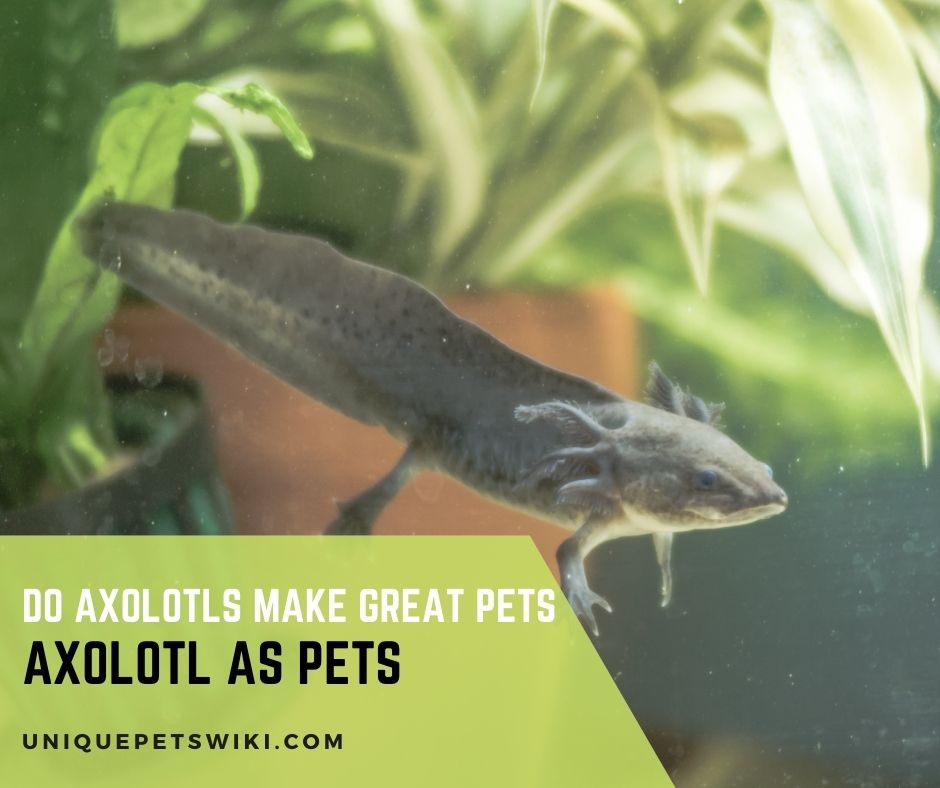Axolotls, also called Mexican walking fish, are unique salamander species but spend their lives in an aquatic environment.
Axolotls are adorable with fascinating and clumsy characteristics, making them unique fish to keep as pets.
Although axolotls require special care, they are hardy, and caring for them is quite easy. Furthermore, they have quite straightforward dietary needs, making them a suitable pet for beginners ready to do the work.
However, you need to consider whether axolotls are the right pet for you before buying them. In this article, we have helped highlight some of the things you need to know before you decide to keep axolotl as pets.
Contents
- Are Axolotls Good Pets?
- Axolotl As Pets: 11 Interesting Shares When Keeping Them
- Axolotl Is A Watch-And-Observe Pet Instead of an Interact and Play With
- Axolotls Are Solitary
- Axolotls Require Brackish and Cool Water
- Axies Need a Minimum 10 Gallon Tank With a Lid
- They Are Not Fond of Light, although Active Any Time of Day
- Axolotls Are Carnivores
- They Have Poor Eyesight
- Breathe With Gills And Lungs
- Life and Successfully Breed As a Larva
- It’s Not Difficult to Take Care of
- Axolotls Can Live 10-15 Years in Captivity
- Is It Legal to Own a Pet Axolotl?
- How Much Does Axolotl Cost?
- Conclusion
Are Axolotls Good Pets?
Yes, axolotls are good pets in temperament and look cute.
They are usually calm and will swim around their tank for fun while they will hide and play around with their tank accessories. They will also come and observe you when watching them through the glass.
However, they are unsuitable for beginner pet owners who do not have experience keeping amphibians.
Axolotls are more of a display pet and should not be handled or removed from their water. Furthermore, they have extremely sensitive skin and require special temperature and water quality to stay healthy.
Axolotls are a type of salamander that originates from Mexico. They have both lungs and gills but spend their lives in the water.
Although axolotls are great pets even for beginners, some of the things that you need to keep in mind when caring for them are stated below:
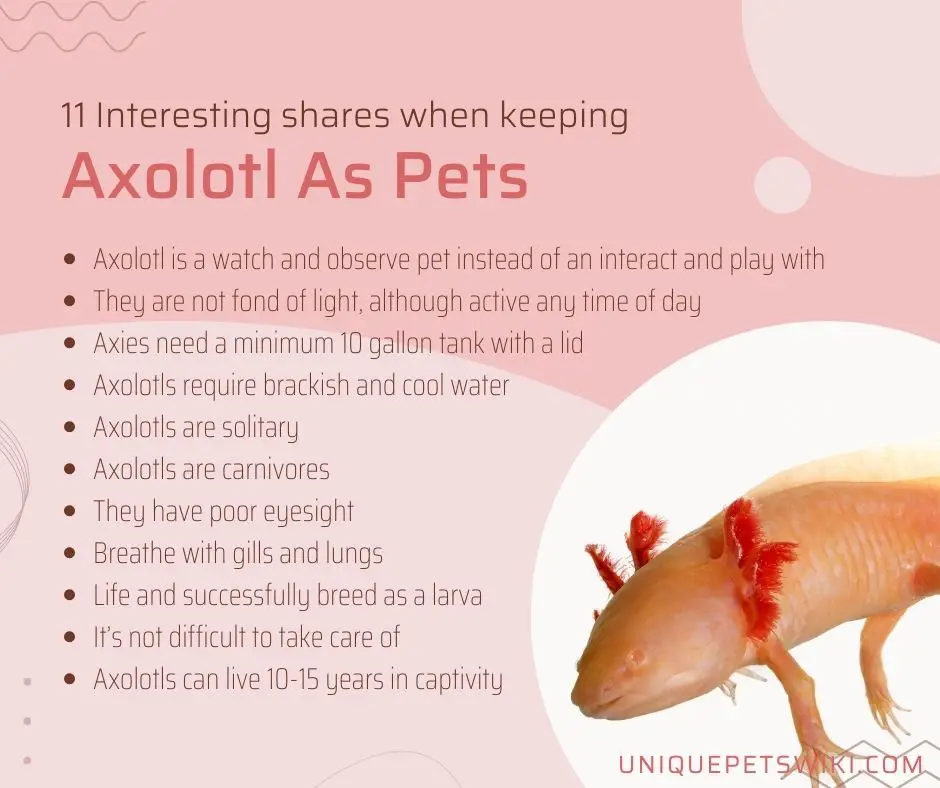
Axolotl Is A Watch-And-Observe Pet Instead of an Interact and Play With
Axolotls are not a suitable pet choice if you are looking for a pet that you can play with. You can opt for a guinea pig instead of axolotl if you are looking for a pet to interact with.
Axolotls are usually active at night or in a tank with low-light environments and are a wonderful pet to watch.
They are quite clumsy, and they spend most of their time roaming around the bottom of their aquarium. You can see them digging or moving around the décor in their tank.
However, axolotls have delicate skin and should not be handled. Their skin is covered in a protective mucus layer which can rub off, making them vulnerable to skin infections if you handle them.
Axolotls Are Solitary
Generally, axolotls are not social creatures, and you will find them on their own. It is recommended that you house axolotls alone, especially if you are a beginner hobbyist.
However, males and females usually seek each other out for mating during the breeding season. You can also find several axolotls living together in the wild but will not interact with each other.
Axolotls are carnivorous creatures and can eat anything that can fit their mouths. The adult can eat small juveniles if they are housed together.
Furthermore, juvenile axolotls of the same size will nip at each other’s gills and feet, causing severe damage.
Therefore, it is recommended to provide enough room and hiding spaces to help reduce aggression and stress. You should also avoid housing them with other pet fish as your axolotls may try to eat them, or the fish may bite them.
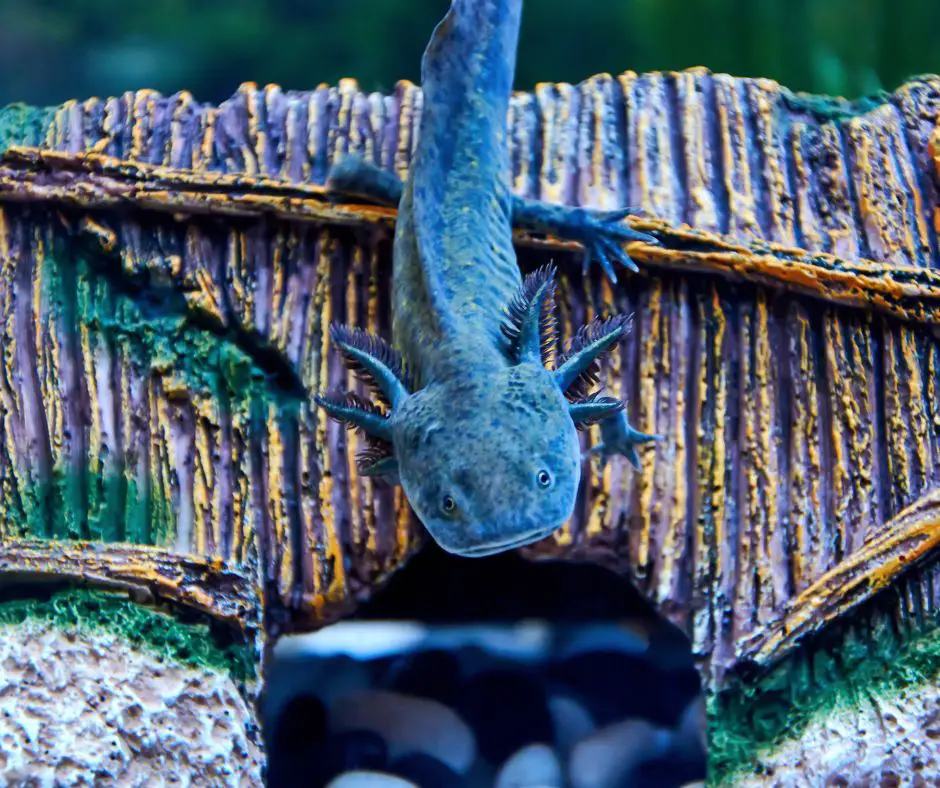
Axolotls Require Brackish and Cool Water
Axolotls are cold-water species, and the water temperature should be around 60-64F or 16-18C. They also require brackish water as they need hard water to help boost their gill function. The ideal pH for an axolotl tank is about 7.4-7.6.
Axolotls have sensitive skin and require specific water conditions to help avoid stress and death. Some of the ideal water conditions that axolotls need to stay healthy and active are stated below.
- Nitrate: less than 40ppm.
- Nitrites: 0ppm
- Ammonia: 0ppm
- KH: 3-8deg (53-143ppm).
- GH: 7-14deg (125-250ppm)
- Oxygen: 70 – 100%
API Test Strips, for Variety of Water Parameters
- Contains one (1) API 5-IN-1 TEST STRIPS Freshwater and Saltwater Aquarium Test Strips 25-Count Box
- Monitors levels of pH, nitrite, nitrate carbonate and general water hardness in freshwater and saltwater aquariums
- Dip test strips into aquarium water and check colors for fast and accurate results
- Helps prevent invisible water problems that can be harmful to fish and cause fish loss
- Use for weekly monitoring and when water or fish problems appear
Last update on 2022-12-30 / Affiliate links / Images from Amazon Product Advertising API
Axies Need a Minimum 10 Gallon Tank With a Lid
A single axolotl requires a minimum 10-gallon tank for housing them. However, it is best to house them in a larger tank to help ensure that they are happy and comfortable.
This is because axolotls produce lots of waste which can affect the water quality in their tank, causing stress and health issues.
Furthermore, it is more difficult to maintain the water quality in smaller tanks. Axolotls also require a tank with more floor space than height, and the ideal tank size for an axolotl is 20 gallons long.
You will need a 30-40 gallon at a minimum if you plan to house two axolotls together. An axolotl tank will also require a tank lid to help prevent your axolotls from jumping out of their tank.
Tetra 55 Gallon Aquarium Kit
- LARGE ENVIRONMENT: Larger environments can house more fish or a greater variety of fish. Maintains water temperature. Essential for tropical fishkeeping
- KIT INCLUDES: one 55 gallon tank, EasyBalance Plus, TetraMin, AquaSafe, 6” fish net, 200W heater, WPF 60 Filter, Stick on digital thermometer, 24” Tetra hinged hood x 2, 2 plant multipacks and a boxwood plant, TetraCare brochure and instruction sheet
- LED LIGHTING: Included lighting adds the natural daylight effect to your aquarium, giving you illuminated viewing of the entire space
- ACTUAL TANK DIMENSIONS: 48.25" L x 12.80" W x 20.90" H
- WEIGHT: This aquarium tank weighs approximately 79 lb by itself. With water, total tank weight can reach 521 lb.
Last update on 2022-12-29 / Affiliate links / Images from Amazon Product Advertising API
They Are Not Fond of Light, although Active Any Time of Day
One of the things to consider when setting up an axolotl tank is lighting. Axolotls are nocturnal creatures and are active at night or during the day in a tank with low light.
You will find them hiding in their hides or under the vegetation in their tank during the day.
Axolotls are not fond of light, and it is recommended that you place their aquarium away from any source of bright light. Therefore, you should keep their tank away from windows or bright lamps as it can stress your axolotl out.
However, your axolotl tank doesn’t have to be perpetually dark. You can light their tank with dim lights. You will need to add more plants, rocks, and shade where your axolotl can hide.
2 Pieces Stackable Aquarium Decoration Rock Caves
Last update on 2022-12-28 / Affiliate links / Images from Amazon Product Advertising API
Axolotls Are Carnivores
Axolotls are carnivorous fish, and they feed on aquatic insects, small fish, larvae, worms, and other amphibians in the wild.
Axolotls are voracious eaters, and they hunt for food by sucking their prey into their mouths.
In captivity, axolotls are not picky eaters and can eat various foods. Some of the foods that you can feed them are:
- Bloodworms
- Nightcrawlers
- Shrimp
- Frozen Brine
- Red wigglers
- Pellets, etc.
You can feed them with either live or frozen foods. They prefer live foods which help attract them to hunt for the food.
You will need to use a tong to wiggle the food to entice your axolotl when feeding them with frozen foods.
They Have Poor Eyesight
Generally, axolotls have poor eyesight. However, this does not affect them that much when hunting for food or moving around. Axolotls use their senses to gather information about their surroundings and move around.
However, it can be hard for them to sense things in their tank if nothing moves. They cannot see their food properly; making it hard for them to feed.
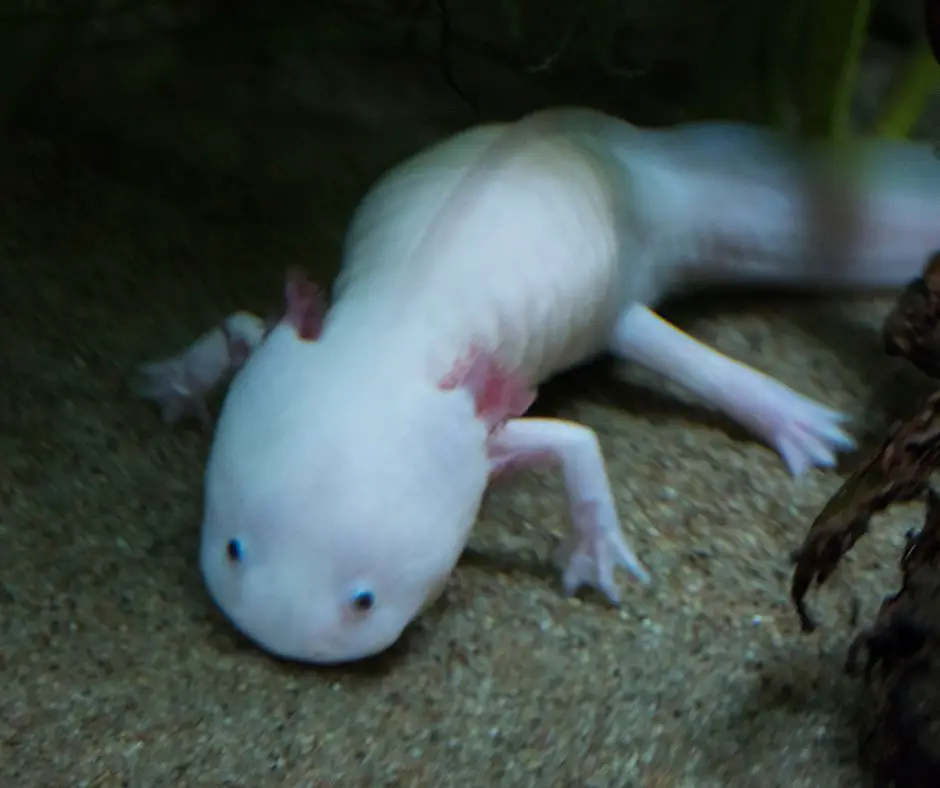
Breathe With Gills And Lungs
A fascinating thing about axolotls is that they can breathe through several means, including their lungs.
- Breathing through skin
- Breathing through gills
- Buccal respiration
- Breathing through lungs
Although axolotls can breathe through different means, you will be surprised that axolotls remain in the water all their lives even though they have developed lungs.
This is because they have very primitive lungs and If you are holding your axolotl out of the water for too long, it will eventually die.
Axolotls rely on water to help them breathe and without water, their gills will eventually dry out and they will suffocate.
Therefore, it is extremely important to make sure that your axolotl is always underwater. Don’t take them out of the water to see how they breathe through their lungs.
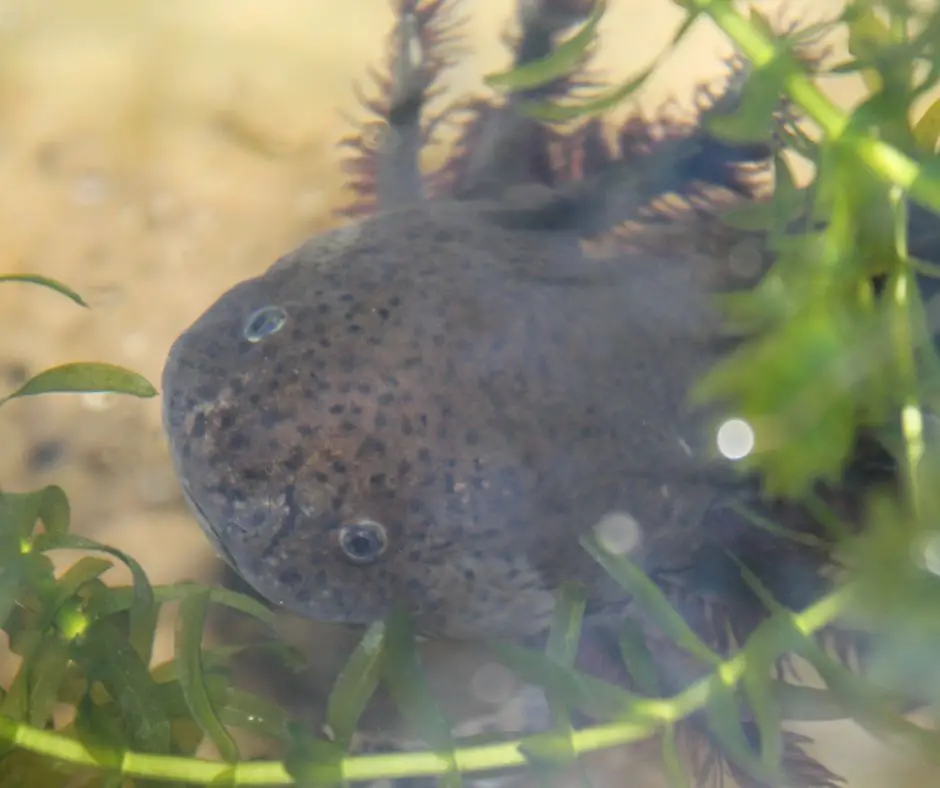
Life and Successfully Breed As a Larva
A unique and fascinating thing about axolotl is that they stay in the larva stage throughout their lives even after becoming sexually mature. Therefore, you should not expect more shape changes and morph with your axolotl.
Axolotl’s breeding season is from December to June, and the female can lay about 1000 eggs in a season. The eggs will then hatch into a jelly-like substance with only a head and body before going into the larva stage.
Baby axolotls will then develop legs two weeks into their larva stage. They will be in this stage for about six months when they reach sexual maturity and breed.
You can consider that your axolotls are fully grown after a year.
It’s Not Difficult to Take Care of
The good thing about keeping Axolotl as a pet is that they are easy to care for. The main thing that you will need to be concerned about is the water conditions.
You can keep your Axolotl healthy and active by ensuring the water conditions in their tank is at an ideal level.
Axolotls are cold-water species, and the water in their tank should be between 60-64F. Apart from feeding, a sufficient water filter helps to ensure you just change their water weekly and check the water parameters.
This will help to ensure there is no buildup of ammonia and nitrite in their tank.
Axolotl: A Complete Pet Owner’s Guide.
- Brown, Lolly (Author)
- English (Publication Language)
- 132 Pages - 09/07/2013 (Publication Date) - Pack & Post Plus, LLC (Publisher)
Last update on 2022-12-29 / Affiliate links / Images from Amazon Product Advertising API
Axolotls Can Live 10-15 Years in Captivity
Axolotls are hardy pets and do not get ill frequently if you can keep them in an ideal enclosure.
This makes them a lasting pet and can live for around 10 -15 years on average. Although rare, some axolotls live for about 20 years or more.
This means you should be ready for a long-term commitment when keeping axolotl as pets. You will need to put in your time and effort to care for them to help ensure they are happy and healthy.
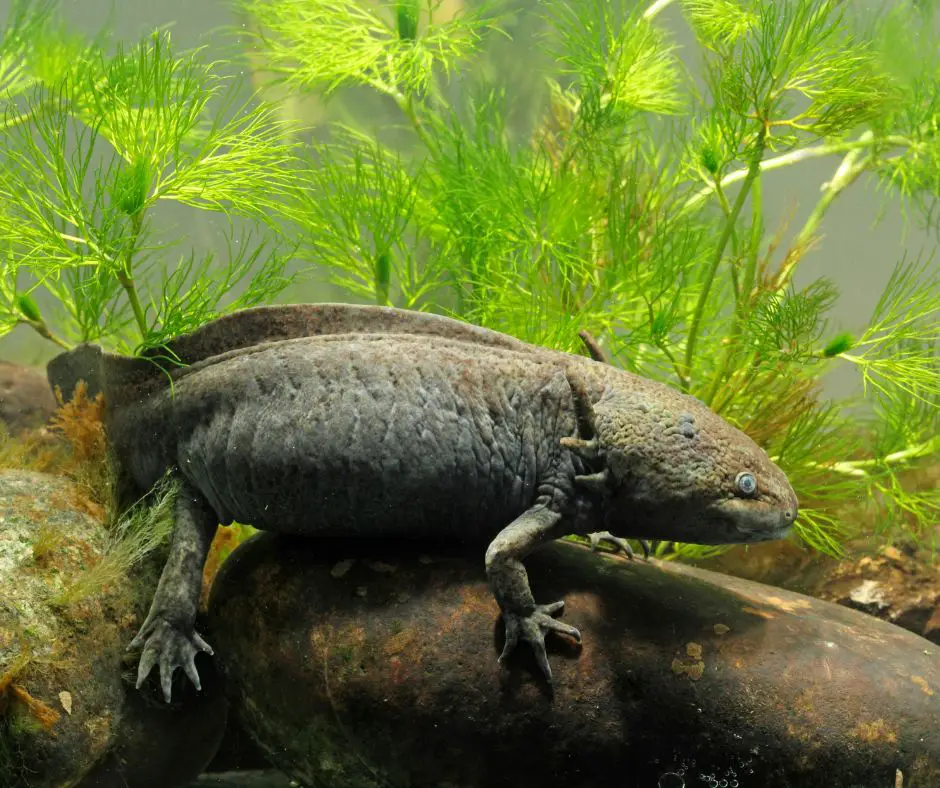
Is It Legal to Own a Pet Axolotl?
One of the things that you should keep in mind before keeping axolotl as pets is whether it is legal to keep them.
In the United States, it is illegal to own axolotls in States like California, Maine, New Jersey, and Virginia. Furthermore, New Mexico places a ban on the importation of Axolotl.
This is to help ensure that people do not capture wild species as they are critically endangered.
It is legal to own a pet axolotl in most parts of Canada except for a few provinces like New Brunswick, Prince Edward Island, and British Columbia. You can keep Axolotl in most cities in Canada except for Manitoba.
You will also need to have a special permit from the Department of land and forestry before you can keep axolotls in Nova Scotia.
However, it is legal to keep axolotls in Europe and Australia. You can check your country’s laws before importing axolotls.
How Much Does Axolotl Cost?
Generally, axolotls are not quite expensive pets to buy. The average cost of a common axolotl morph ranges from $20- $70. However, a rare axolotl morph like the piebald axolotls can cost more than $100.
Note: apart from the cost of buying an axolotl, there are also several other costs to consider such as the cost of food, housing, and accessories.
You can check out axolotl cost here to help determine if you have enough budget for them.
Conclusion
Axolotls are fun and adorable pets, and caring for them is quite easy despite requiring special care. However, axolotls are more of a display pet than those you may interact and play with.
The good thing is that they have a long lifespan, and feeding them is quite easy and cheap.
We hope this article helps give you an insight into some of the things that you need to know before you buy axolotl as pets. You can message us in the comment section below if you have any question or comment about axolotls.
